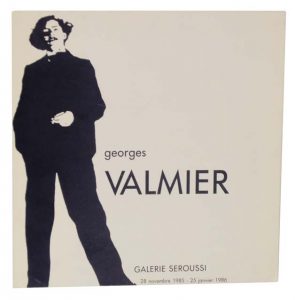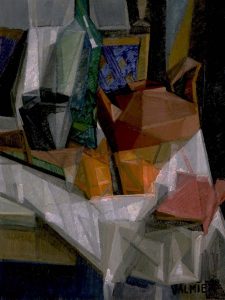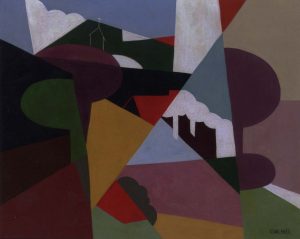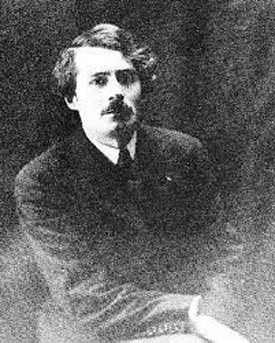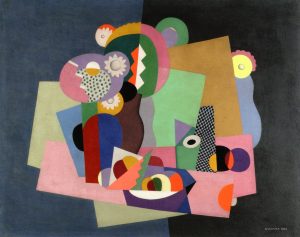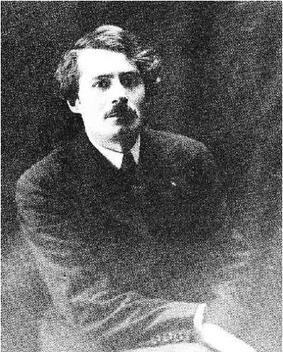Georges Valmier was born on the 11th of April in 1885 in Angouleme, France.
1885 - 1937
Georges Valmier
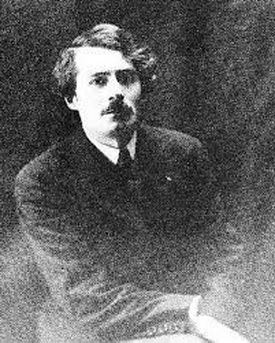
description
A French artist, designer, stage designer and musician. Georges Valmier was a follower of the most advanced artistic trends of his time, from Impressionism to Cubism and abstraction.
The artist closely cooperated with the modern theater, creating scenery and costumes for performances, and was also a successful designer, developing models of carpets, furniture and other household items. The artist made a great contribution to the development of Cubist and Abstract (non-figurative) art. He was, along with J. Arp, A. Glace and others, a member of the executive committee of “Abstraction-Creativity” group – the first association of abstract artists, which was of great importance for the development of European abstract painting. Valmier published his works in the regularly published and popular not only in Paris edition of the Bulletin of Modern Art, which in many respects influenced the formation of artistic views in society. Georges Valmier was an excellent musician, he performed many concerts with the works of Debussy, Ravel, Sati, and others, and even influenced composer A. Jolivet.
At the end of his life, the artist devoted much time to the stage design and the creation of costumes for modern theater and ballet. The most fruitful was his collaboration with director Marinetti at the Italian “Theater of Art”.
Valmier’s work had a significant influence on the development of non-figurative painting of the early twentieth century. First of all, this is a pure abstraction, in which there is not even a hint of real forms, as well as Pop-art, Neoplasticism and Dadaism.
Key ideas:
– The art of Georges Valmier developed in its own way, without direct contacts with the Puteaux group and other Cubist artists.
– The artist’s style, based on the works of Cezanne, is distinguished by synthesized forms, a schematic perspective and accentuated attention to the geometry of objects and space. His self-portraits, portraits, still lifes and landscapes of Montmartre consist of many-sided planes, emphasized by dynamic diagonals and expressive color.
– After the First World War, in which the artist was directly involved, his painting underwent significant changes, becoming more abstract. Flat figures, located in the center of the picture, overlap each other and merge into a single harmonious and balanced composition. The use of large surfaces with a rhythmic pattern, the presence of painted elements, as if superimposed on the surface of the picture, cause associations with Picasso’s Cubism on its synthetic phase, although it differs in a more saturated color palette and a smaller crushing of forms.
– In the 1930s, concentric circles and rectangles filled with a monochromatic saturated color began to appear in the artist’s paintings. Figures in his paintings have become even simpler without unnecessary details, and only a few recognizable elements that have a slight resemblance to real things help to identify the image.
1885
1890
1906
1913
1919
1922
1930
1936
1937
The birth of the artist
The artist's family moved to Montmartre
The artist’s family moved to Montmartre, where he received his education, including art and music. The earliest works of Georges date back to 1905. They represent portraits of relatives in a home setting and landscapes with expressive strokes and colorful shadows.
He began his studies at the Free Academy of Humbert
He began his studies at the Free Academy of Humbert, located Boulevard de Clichy, where his talent was noticed by director Ferdinand Humbert. The following year, on the recommendation of his mentor, the artist entered the School of Fine Arts, where he continued his studies until 1909. A visit to the retrospective exhibition of Cezanne had a great importance for the development of Valmier’s creative style, which became for him a real discovery in the field of contemporary visual arts.
He exhibited his still lifes, landscapes and portraits in the Salon of Independent for the first time
He exhibited his still lifes, landscapes and portraits in the Salon of Independent for the first time. The most interesting was painting “View of Saint-Martin Canal”, made in an innovative style. The following year, the artist again took part in the Salon, showing to the public several of his works, including “Portrait of Madame Reno”, which was noticed by art critic André Salmon. In 1914, Valmier was drafted to the front as a medical worker. Cubist A.Glez, who became his good friend, served at one military unit with him.
In 1921, Rosenberg organized a personal exhibition of Valmier
Upon his return to Paris, he continued painting. The artist met L. Rosenberg, who became his artistic dealer and patron. Thanks to his friendship with Glaz, he established creative contacts with many Cubists. At this time, the artist’s creative style underwent significant changes, becoming more abstract. In 1921, Rosenberg organized a personal exhibition of Valmier in his Gallery of Modern Art. In the same year, the painter took part in the exhibition “Masters of Cubism” in Paris.
Started active cooperation with the modern theater
Started active cooperation with the modern theater. The artist created costumes and scenery for the productions of nine futuristic works, directed by Italian director Marinetti at the Theater of Art. Valmier worked on theatrical studies, experimented with various ways and forms of expression on stage. In this period, the artist mostly painted still lifes in the technique of gouache. In 1928, the artist was engaged in the design of the Rosenberg mansion on the street de Longchamp in Paris and participated in the Salon of Independent with large canvas “Circus”.
During this period he traveled a lot
Became a participant and member of the executive committee of the association of abstractionists “Abstraction-Creativity”. Together with J.Arpom, A.Glez, F.Kupka and other artists of the group, he took part in the joint exhibition in Paris. During this period he traveled a lot. The artist exhibited his paintings in New York, Vienna and Warsaw.
Valmier worked on large-scale panels to decorate the cinema hall
Valmier worked on large-scale panels to decorate the cinema hall of the Palace of Chemistry at the World Exhibition in Paris. During this work, the artist seriously fell ill and died of a heart attack a year later.
The death of the artist
He passed away on March 25, 1937, Paris.

